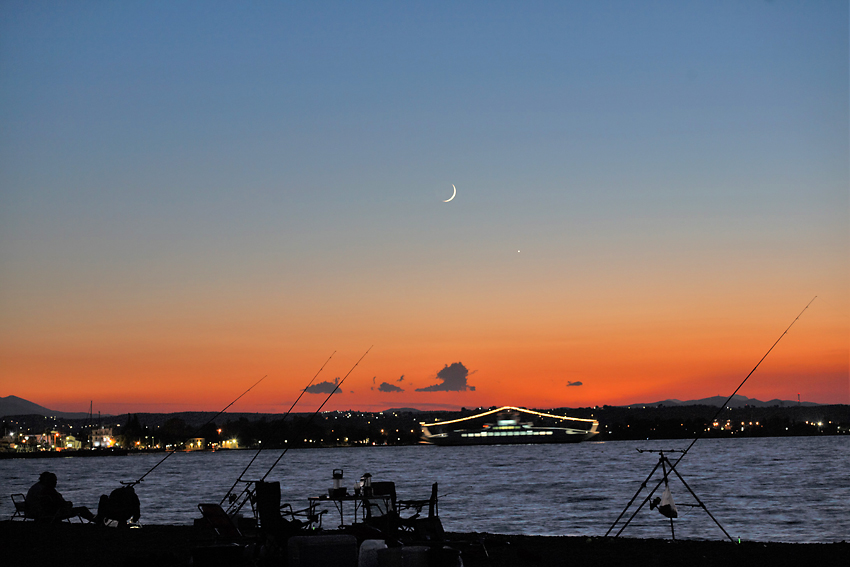
A gathering involving celestial bodies, most predominantly planets, is classified as a conjunction and represents a very
dramatic sight when looking overhead. Planets by their nature are generally the brightest specks of light in the
overhead sky and, therefore, easily stand out on their own. This is especially true when two or more planets are in
proximity to each other ranging from less than a degree to tens of degrees spanning the eastern or western sky.
Strange as it may sound, Mercury is the least observed planet using the naked-eye and this includes professional astronomers
and which is attributed to the planet's close proximity to the Sun. As a result, conjunctions involving Mercury and one
of the other planets is a great means to catching this elusive planet once the sun has yet to rise in the east or has
already set in the west.
Conjunctions are particularly impressive when they involve the most dominant celestial body of the night sky, namely the moon,
and where one can observe a variable juxtaposition between the moon and one or more planets from evening to evening.
Note: The effort below involving the very young crescent moon was taken from the seaside resort
area of Oropos northeast of Athens and whose history dates to the time of the golden age of ancient Greece. Oropos is best known
for the sacred sanctuary Amphiareion (5th century BC) lying in the immediate hills and which was visited by pilgrims in their
desire to consult the oracle Amphiaraus for advice and healing. To the southeast of the crescent moon is the brightest planet of
the evening sky, namely Venus, and which is characterized with an apparent diameter of only 11.01" and a phase of 91.1%. Jupiter
is further southeast of Venus basking in the orange glow above the horizon and not visible at the resolution below (but clearly
discernible at higher resolutions). The ferry boat Anna Maria is visible in the distant foreground during one of its many daily
trips between mainland Greece at Oropos and Eretria (Euvoia).
Note: For additional conjunction results involving the Moon and other celestial bodies from around
the world, please click here.
|
Body: Moon Mass: 0.0123 x Earth Mean Eq Diameter: 0.2719 x Earth Distance: 400,433 km Sidereal Rev: 27d 07h 43m 11s Age: 2d 04h 46m Phase: 5.4° Diameter: 29.89' Magnitude: -6.5 Rukl: N/A |
 |
Date: Sep 03, 2016 20:33:05 UT+3 Location: Oropos, Greece Equipment: Canon EOS 5D Mk I Canon EOS EF 70-200mm f/4 L @ 100 mm / f5.0 Exposure: 1 x 0.5 sec ISO 100 RAW Image Format 4368x2912 Image Size Manual Mode Software: Digital Photo Pro V1.6.1.0 Photoshop CS2 Processing: RAW to TIFF (16-bit) Conv Resampling JPG Compression |